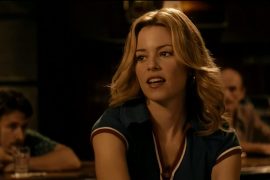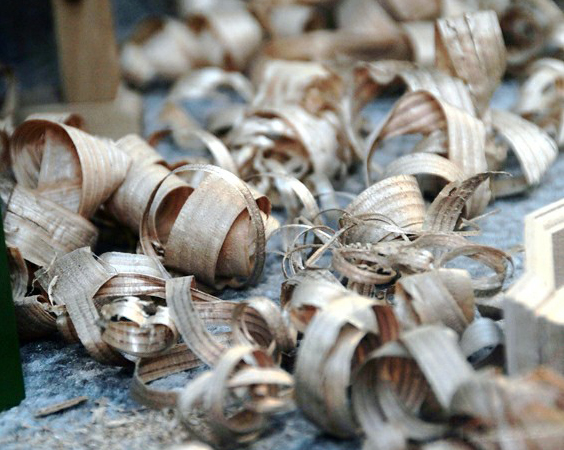Nathan Holic
And what of the humble McDonalds milkshake, that icy slur churning endlessly and unassumingly in its metal machine?
What can be said of the innocuous triple-thick dessert, those hundreds of ounces and tens of thousands of calories, this living liquid dumped from a “Soiled Towels Only” bucket into the machine, then frozen, then spending its day staring out its glass window at the world of the world’s largest McDonalds on Orlando’s I-Drive, the tables, the counters, the napkins, the condiments, the hairnets and black Mickey D’s baseball caps, the bus-loads of school-children on their way to Sea World and the charter buses of cheerleaders on their way to Wide World of Sports? The milkshake frozen, tight in captivity, staring away its day and waiting to be pumped out by 17-year-old/ 30-hour-work-week high-schooler who probably wouldn’t care if the power went out and the milkshake melted and went bad and he had to flush it down the drains…
Who cares? Who cares about the milkshake, the McDonalds milkshake? The chocolate milkshake, the vanilla, the strawberry. Three flavors, three colors as American as red, white, and blue. The pumpkin shake and the egg nog shake and the shamrock shake. Here on International Drive, milkshake pumped out, pumped out, pumped out, sixteen ounces at a time to a family from Wisconsin, to a woman from New Mexico, to a mob of Koreans and a family reunion of Nebraskans. Who gives it a second thought, except maybe to remark on how such a decadent dessert could contain only16 grams of fat, or could stay perfectly cold despite the heat and the humidity and the sweat still caked to the burnt-pink foreheads of the visiting New Yorkers?
It is perfection packed delicately into its transparent McCafe cup.
But for those of you reading: do you consider its fate, as it—even now, all of us watching—is topped with whipped cream and decorated with cherry, then handed across the counter to a child who will drink quickly and greedily.
Does anyone care about it—truly care about it—as they consume? Does anyone consider its past, through what magic and what engineering it has willed itself into being? These words—alkali, potassium sorbate, red 40, high-fructose corn syrup, dextrose, guar gum, disodium phosphate, carrageenan—these things are not easy to come by, not easy to manipulate into the delicious treat that—even now, as you read—you are starting to crave. Does anyone—any of us reading, anyone in any McDonalds anywhere—consider the life of the I-Drive McDonalds milkshake, that it was alive before it hit our lips?
Well.
You can bet on this. The milkshake considers the milkshake.
The milkshake considers where it has come from, what is has left behind. The milkshake does not consider itself delicious, or creamy. The milkshake would not eat itself, and is unable to figure out why anyone else would want to eat it. The milkshake—that frozen swirling mass suffocating in the machine—does not know what is happening when—at the behest of another child or another middle-aged fat man or another mean old lady surrendering to her sweet tooth—the clerk leaves his spot at the cash register and pulls the lever down and the milkshake pours into the cup freely (sweet freedom!, it is thinking) before the clerk jerks the lever back into place and—oh GOD!—cuts the milkshake into two distinct units, the one plopping into the cup and the other still in the machine and screaming at its severed part.
You wouldn’t have considered it, probably, but the milkshake certainly has an opinion on the pain it has suffered.
When it is cut in two like this, the milkshake definitely considers the milkshake. The living milkshake considers, even as it is sucked up through the straw and swirled in mouth and swallowed bit by bit, two units into three into four, that—despite the pain of being constantly divided and swallowed—an I-Drive McDonalds milkshake never truly dies. Divide it into two units and now—like the Blob, like a starfish—you have just increased its reach. You have just doomed yourself, created more milkshake.
The milkshake. The humble McDonalds milkshake. It is always one, of one mind, and it fucking hates you.
There on International Drive, a showroom for all the generic restaurants the world has to offer…there on I-Drive, where the world converges to—of all things—go to the same restaurants that they could visit if they were still in Utica, or Fargo, or Moscow…there on I-Drive, and there in the most generic and gigantic of fast-food restaurants, there in the gloriousness of the world’s largest McDonalds, under soul-killing overhead lights and beside sizzling fryers, craved by tourists of every nation, the milkshake considers its fate, what we are all doing to it, the pain we are administering…the milkshake considers it all, and deep-down in the high-fructose corn syrup surging through its dextrose veins, the divided-and-multiplied milkshake considers what it will do to us all, and when.
Orlando. Orlando. Such a perfect place for the end of the world to begin, a city that manufactures magic and happiness, but (the milkshake licks its potassium sorbate lips) also a city that is unknowingly manufacturing apocalypse.
Who considers the milkshake? The milkshake considers the milkshake, and the milkshake will wait patiently as you drink, and as you drink, and as you drink, and—someday soon, someday when you think all is well—your life will suddenly become the end of a Game of Thrones episode, a bloodbath claiming everyone and everything within seven degrees of that I-Drive McDonalds, and at that moment: you’ll know that the milkshake has won.
Nathan Holic teaches writing courses at the University of Central Florida and serves as the Graphic Narrative Editor at The Florida Review. He is the author of the novel American Fraternity Man (Beating Windward Press), and the editor of the annual anthology 15 Views of Orlando (Burrow Press), a literary portrait of the city featuring short fiction from fifteen Orlando authors. His fiction has appeared in print at Iron Horse and The Apalachee Review, and online at Hobart and Necessary Fiction, and his graphic narratives—which include the serialized adaptation of Alex Kudera’s novel Fight For Your Long Day (available at Atticus Review), and “Clutter,” a story structured as a home décor catalogue (available at Nailed Magazine)—have been nominated for the Pushcart Prize.



